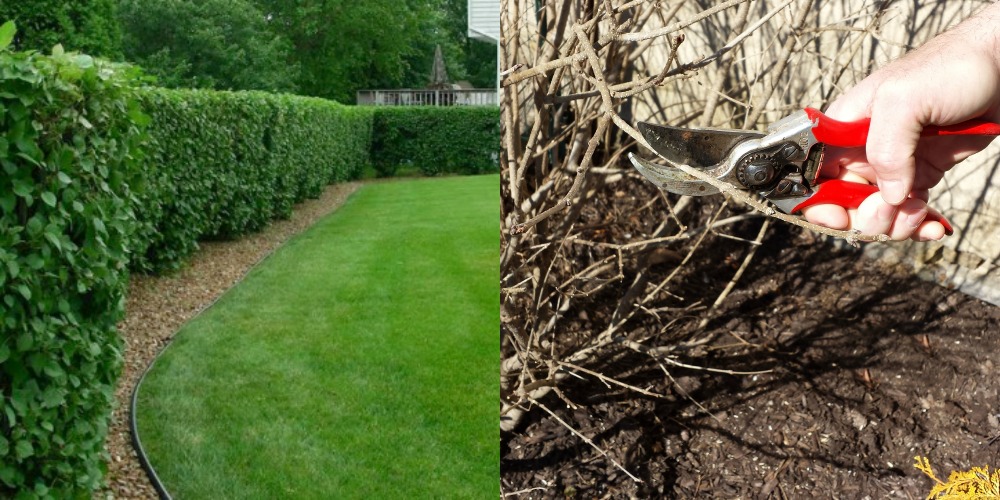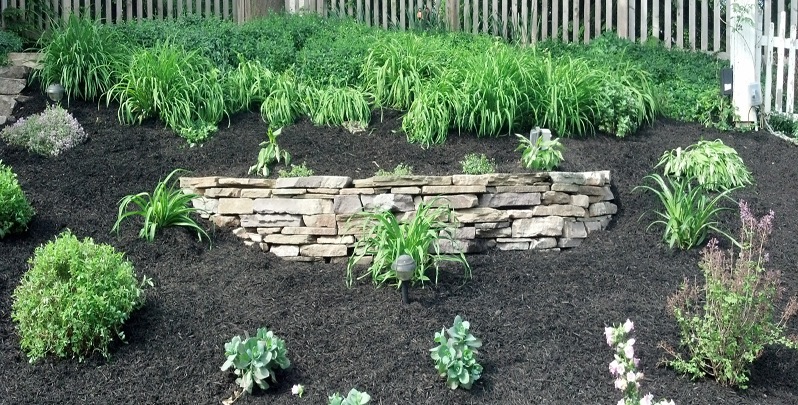Spring Landscape Maintenance
Early spring is the time to survey your property and attend to the things that have been marked by winter, especially after the winter we have just gone through. Main concern issues would be trimming or pruning of damaged trees and shrubs, the clean-up and mulching of landscape beds and clean-up of debris in turfgrass.
Spring Trimming
Spring trimming and pruning is certainly a task that is necessary for multiple reasons, particularly after harsh, snowy winters. Trimming shrubbery in spring allows for shaping and controlling of plant growth. It will also allow you to redirect plant growth (i.e. away from a walkway or window). Pruning dead and damaged branches from shrubs and trees will let the plant heal quicker and can prevent the entrance of harmful insects and disease. New buds will form and allow the plant to thicken its growth and keep it from appearing lanky or “wild.” With the investment in plant material and the value that they add to your property, it is best to keep them in good health.
Mulching
Besides making your landscape beds look fresh and aesthetically pleasing, mulching has a lot of other benefits. Mulching your landscape beds annually helps to retain moisture in the ground, block weeds from germinating, protect against soil erosion around the plant and insulate plant roots. As it breaks down, mulch adds organic matter to the soil, which adds beneficial nutrients for plants to uptake through their roots. Spring mulching also provides the opportunity to use a pre-emergent herbicide underneath the mulch that helps to keep the weed seeds in the soil from germinating. Weeds can deprive the plant material from nutrients and moisture in the soil.
Lawn Clean-up
Get your lawn off to a healthy start and remove leaves, sticks and other debris left over by winter. Wet and matted leaves left on the lawn can smother and kill the turfgrass plants. Debris on the lawn also interferes with mowing, fertilizing, aeration, and seeding. Snow mold can be another problem in early spring as the snow melts. It is a fungal disease that turfgrass plants can get when there is prolonged periods of snow on the ground. It looks like dead circular patches of matted grass. Usually, light raking of the area solves the problem by increasing air circulation to help with drying of the grass plant and loosening matted grass so new plants can grow. Once dry and actively growing, the turfgrass typically recovers without the need of a fungicide. Spring fertilization will help promote turfgrass growth. In order to prevent weed encroachment, overseeding of your lawn may be needed to help fill in thin areas of turfgrass. A thick lawn is less likely to have many weeds.
Taking care of these issues early in the season, will help your overall landscape thrive for the rest of the year.
 Houp Landscaping – Enhancing Nature's Beauty
Houp Landscaping – Enhancing Nature's Beauty

